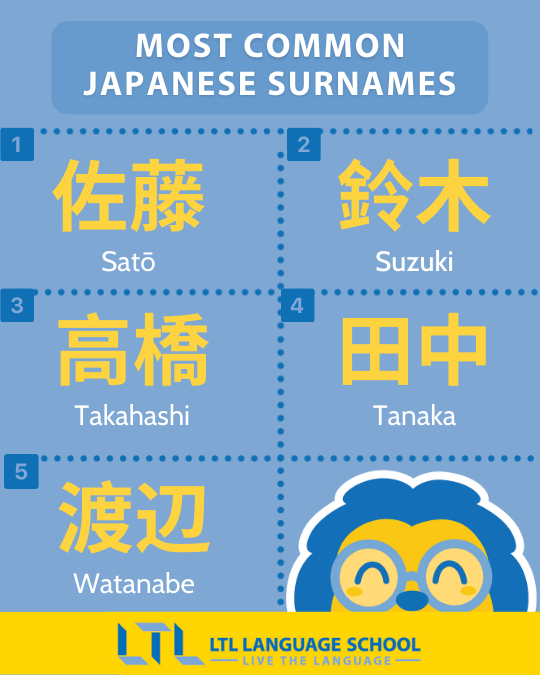There’s something uniquely captivating about Japanese culture, from its ancient traditions to its vibrant modern cities. When we think about Japan, images of cherry blossoms, bustling Shibuya crossings, and serene temples often come to mind. But beyond the visual splendor, there’s a deep cultural significance in everyday elements, including something as fundamental as names. These names carry stories, history, and a connection to family lineages that stretch back centuries, offering a fascinating glimpse into the fabric of Japanese society.
Family names, or surnames, are not just labels; they are identifiers that often reflect geographical origins, historical occupations, or even a deep spiritual meaning. In Japan, like many other cultures, certain surnames have become incredibly prevalent over time, passed down through generations. These common names aren’t just statistics; they are living testaments to population shifts, historical events, and the enduring nature of family bonds. Understanding them helps us appreciate the subtle nuances of Japanese heritage.
If you’ve ever wondered about the prevalence of certain surnames when reading Japanese literature, watching anime, or simply meeting people, you’re in good company. Many are curious about which names truly stand out in the demographic landscape. In this article, we’re going to dive into the fascinating world of the most common japanese last names, exploring their meanings, origins, and why they’ve remained so popular through the ages. Get ready to discover the stories behind some of Japan’s most recognizable family names.
Exploring Widespread Japanese Family Names
-
Sato (佐藤)
When you talk about the most common japanese last names, Sato almost always tops the list. This surname is incredibly prevalent across Japan, with a rich history that dates back centuries. Its kanji characters translate to “help” or “assistant” (佐) and “wisteria” (藤), which hints at its potential origins. The “fuji” (藤) character is often associated with the Fujiwara clan, a powerful aristocratic family in ancient Japan, suggesting that many Sato families might have historical ties or connections to this prominent lineage, perhaps as local officials or branches of the clan.

The widespread distribution of the Sato surname today makes it a household name throughout the Japanese archipelago. It’s often found equally in both urban centers and more rural prefectures, a testament to its long-standing presence and growth over generations. Its ubiquity makes it a fascinating example of how certain family lines can expand and endure, becoming deeply interwoven into the national identity, representing a significant portion of the Japanese population.
-
Suzuki (鈴木)
Another name that consistently ranks among the top is Suzuki, meaning “bell tree” or “bellwood.” This beautiful name has an interesting story, believed to have originated in the Kumano region of Wakayama Prefecture. It was particularly associated with the Kumano Shrine, where a family of Shinto priests served and used this surname. The “suzu” (鈴) refers to a small bell, often used in religious ceremonies, while “ki” (木) means tree or wood, symbolizing nature and ancient spiritual practices.
From its initial spiritual roots, the Suzuki surname spread widely, especially during the Edo period when families often adopted names for administrative or social reasons. Today, it’s remarkably common, found across all parts of Japan. Its pleasant sound and natural imagery have perhaps contributed to its enduring popularity. It’s a name that evokes a sense of tradition and a connection to both historical religious practices and the natural world, representing a significant portion of Japan’s population.
-
Takahashi (高橋)
Takahashi, meaning “high bridge,” is a surname that paints a vivid picture with its kanji characters (高 “high” and 橋 “bridge”). This name likely originated in communities located near prominent or elevated bridges, which were significant landmarks in ancient times. Bridges were not just crossings; they were vital infrastructure, symbolizing connection and passage. Families living by such structures would naturally adopt a name reflecting their immediate environment, making Takahashi a very descriptive surname.
The prevalence of Takahashi across Japan suggests that many different locations had “high bridges,” leading to multiple independent origins for the surname. It’s a testament to the landscape and geography of a nation crisscrossed by rivers and valleys, where such structures were essential for travel and commerce. This name, much like Sato and Suzuki, is deeply embedded in the cultural fabric, representing countless families who have contributed to Japan’s history and development.
-
Tanaka (田中)
Tanaka is a wonderfully straightforward and incredibly common Japanese surname, translating literally to “in the rice paddies” (田 “rice paddy” and 中 “middle” or “inside”). This name directly reflects Japan’s agrarian past, where rice cultivation was the cornerstone of life and economy. Many families lived and worked in close proximity to rice paddies, making this a highly descriptive and practical surname to adopt. It speaks volumes about the historical livelihoods of a vast majority of the Japanese population.
The sheer simplicity and directness of Tanaka’s meaning likely contributed to its widespread adoption across different regions. It’s a classic example of a topographical surname, illustrating how deeply people’s identities were tied to their land and occupation. Even in modern, urbanized Japan, the name Tanaka continues to be extremely common, serving as a constant reminder of the nation’s agricultural roots and the enduring legacy of farming families.
-
Watanabe (渡辺)
Watanabe translates to “ferry side” or “to cross a boundary” (渡 “to cross” or “ferry” and 辺 “area” or “side”). This surname has a fascinating historical origin tied to the Watanabe clan, a prominent samurai family descended from the Minamoto clan. They were often associated with ferry services or strategic crossing points, giving rise to their distinct name. The name evokes images of travel, navigation, and controlling vital passages, which were crucial roles in feudal Japan.
The Watanabe surname spread significantly due to the influence and dispersal of the clan members over time. It signifies a connection to important geographical features and the control of movement, which would have been a position of power and responsibility. Today, it remains one of the most common Japanese last names, found widely throughout the country, carrying with it a historical echo of maritime and riverine activity, reflecting a rich and influential past.
-
Ito (伊藤)
Ito is another incredibly common surname with a connection to the powerful Fujiwara clan, similar to Sato. The kanji characters mean “this” or “that” (伊) and “wisteria” (藤). The “fuji” (藤) indicates a lineage that often branched off from or served the Fujiwara clan, particularly in the Ise province (modern-day Mie Prefecture), hence the “I” (伊) sound. This connection to such an influential aristocratic family provided a strong foundation for the surname’s proliferation.
Over centuries, descendants and associates of the Fujiwara clan who adopted the Ito surname dispersed across Japan, cementing its place among the nation’s most prevalent names. It’s a testament to the enduring influence of ancient aristocratic houses on the naming conventions and demographic makeup of Japan. The name Ito carries a subtle historical weight, linking many families back to a foundational period of Japanese governance and culture, showing the intricate tapestry of family origins.
-
Yamamoto (山本)
Yamamoto, meaning “base of the mountain” or “mountain origin” (山 “mountain” and 本 “base” or “origin”), is a truly evocative surname. As Japan is a remarkably mountainous country, it’s easy to see why this name became so common. Many communities and families naturally settled at the foot of mountains, relying on the natural resources and protection they offered. The name perfectly captures a direct relationship between people and their immediate geographical surroundings.
The widespread occurrence of the Yamamoto surname can be attributed to its geographical significance. It could have arisen independently in numerous locations where families lived at the base of a mountain. This makes Yamamoto a classic example of a topographical surname, deeply rooted in the land. It’s a name that resonates with the natural beauty and rugged terrain of Japan, linking countless individuals to the nation’s iconic peaks and the history of settlement around them.
-
Nakamura (中村)
Nakamura, meaning “middle village” (中 “middle” and 村 “village”), is another highly common and geographically descriptive surname. Its prevalence suggests that many settlements across Japan had a “middle village,” perhaps referring to a central or established community within a larger area, or simply a village located centrally within a specific region. This straightforward description made it a natural choice for countless families to identify their origin.
Like Tanaka and Yamamoto, Nakamura is a prime example of how place names became personal names. Its widespread adoption across different prefectures indicates that such “middle villages” were a common feature of the Japanese landscape. The name evokes a sense of community and rootedness, connecting individuals to the heart of their ancestral villages. Nakamura stands as a strong reminder of Japan’s historical village-based society and how these local identities shaped family names.
-
Kobayashi (小林)
Kobayashi, meaning “small forest” (小 “small” and 林 “forest” or “grove”), is a beautifully simple and widely recognized surname. Given Japan’s rich natural landscapes and historical abundance of forested areas, it’s not surprising that many families would have adopted a name reflecting their proximity to such features. A small forest or grove would have been a common landmark in many communities, serving as a distinct identifier for people living nearby.
The widespread distribution of Kobayashi suggests that numerous independent origins for this surname occurred across Japan. It’s a name that speaks to the intimate relationship between Japanese people and their natural environment, highlighting the presence of smaller wooded areas that were part of everyday life. Kobayashi beautifully encapsulates a tranquil, natural setting, linking families to the verdant landscapes that define much of the Japanese countryside.
-
Kato (加藤)
Kato is another name carrying the “fuji” (藤) character, strongly suggesting a connection to the powerful Fujiwara clan. The “Ka” (加) part often refers to Kaga Province (modern-day Ishikawa Prefecture). Thus, Kato likely identifies individuals or families who were part of the Fujiwara lineage but originated or were influential in the Kaga region. This pattern of combining a geographical indicator with the clan marker was a common way for branches of large clans to distinguish themselves.
The historical importance of the Fujiwara clan and its various branches helped solidify Kato as one of the most common Japanese last names. Its spread across Japan reflects the movement and influence of these powerful families over centuries, demonstrating how aristocracy and regional identity intertwined to form lasting surnames. Kato, therefore, isn’t just a name; it’s a historical marker, pointing to specific origins within a grander aristocratic lineage that shaped much of ancient Japan.
-
Yoshida (吉田)
Yoshida, meaning “lucky rice field” or “good rice paddy” (吉 “good” or “lucky” and 田 “rice paddy”), is a wonderfully auspicious and very common surname. Like Tanaka, it clearly highlights Japan’s deep historical connection to rice cultivation. The addition of “yoshi” (吉) gives it a positive connotation, perhaps indicating a particularly fertile or prosperous field, or simply expressing a hopeful sentiment for a family’s land.
The name Yoshida likely originated independently in numerous locations where families were associated with prosperous rice paddies. Its positive meaning may have also contributed to its appeal and adoption. Today, it remains a highly prevalent surname, reflecting both the agricultural roots of the nation and a cultural inclination towards good fortune and prosperity. It’s a name that resonates with the hopes and hard work tied to the land.
As we’ve journeyed through the meanings and origins of some of Japan’s most prevalent family names, it becomes clear that each one is more than just an identifier. They are capsules of history, geography, and culture, revealing stories about ancient clans, ancestral occupations, and the very landscape of the Japanese archipelago. From the majestic mountain bases to the vital rice paddies and historic bridges, these names paint a vivid picture of how communities formed and how identities were shaped over millennia.
Understanding these common surnames offers a deeper appreciation for the intricate tapestry of Japanese heritage. They connect individuals to a long and storied past, providing a sense of continuity and belonging. Each time you encounter a Sato, Suzuki, or Tanaka, remember that you are not just hearing a name, but an echo of Japan’s rich history, its natural beauty, and the enduring legacy of its people. These names are living symbols of a culture that values tradition, family, and a profound connection to the land.



